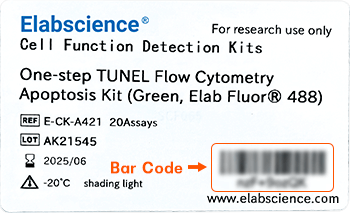Recombinant Mouse TNFR1/TNFRSF1A Protein (His Tag) (PKSM040648)

For research use only.
| Synonyms | CD120a, FPF, TNF-R, TNF-R-I, TNF-R1, TNF-R55, TNF-alphaR1, TNFAR, TNFR60, TNFRI, TNFRp55, TNFalpha-R1, Tnfr-2, Tnfr1, p55, p55-R |
| Species | Mouse |
| Expression Host | HEK293 Cells |
| Sequence | Met 1-Ala 212 |
| Accession | NP_ 035739.2 |
| Calculated Molecular Weight | 21.8 kDa |
| Tag | C-His |
| Bio-activity | 1. Immobilized human TNFa at 10 μg/mL (100 μl/well) can bind biotinylated mouse TNFRSF1A-his. The EC50 of biotinylated mouse TNFRSF1A-his is 0.28 μg/mL. 2. Immobilized mouse TNFa at 10 μg/mL (100 μl/well) can bind biotinylated mouse TNFRSF1A-his. The EC50 of biotinylated mouse TNFRSF1A-his is 0.13 μg/mL. 3. Measured by its ability to inhibit the TNFα-mediated cytotoxicity in the L929 mouse fibrosarcoma cells in the presence of the metabolic inhibitor actinomycin D. The ED50 for this effect is typically 0.5-1. 5 μg/mL in the presence of 0.1 ng/mL recombinant mouse TNFα. |
| Form | Lyophilized powder |
| Purity | > 96 % as determined by reducing SDS-PAGE. |
| Endotoxin | < 1.0 EU per μg of the protein as determined by the LAL method. |
| Storage | Generally, lyophilized proteins are stable for up to 12 months when stored at -20 to -80℃. Reconstituted protein solution can be stored at 4-8℃ for 2-7 days. Aliquots of reconstituted samples are stable at < -20℃ for 3 months. |
| Shipping | This product is provided as lyophilized powder which is shipped with ice packs. |
| Formulation |
Lyophilized from sterile PBS, pH 7.4 Normally 5% - 8% trehalose, mannitol and 0.01% Tween 80 are added as protectants before lyophilization. Please refer to the specific buffer information in the printed manual. |
| Reconstitution | Please refer to the printed manual for detailed information. |
| Background | The cluster of differentiation (CD) system is commonly used as cell markers in immunophynotyping. Different kinds of cells in the immune system can be identified through the surface CD molecules which associating with the immune function of the cell. There are more than 320 CD unique clusters and subclusters have been identified. Some of the CD molecules serve as receptors or ligands important to the cell through initiating a signal cascade which then alter the behavior of the cell. Some CD proteins do not take part in cell signal process but have other functions such as cell adhesion. CD120a (cluste of differentiation 120a), also known as TNFR1 / TNFRSF1A, is a member of CD family, tumor necrosis factor receptor superfamily. CD120a is one of the most primary receptors for the tumor necrosis factor-alpha. It has been shown to be localized to both plasma membrane lipid rafts and the trans golgi complex with the help of the death domain (DD). CD120a can activate the transcription factor NF-κB, mediate apoptosis, and regulate inflammation processes. |
Other Clones
{{antibodyDetailsPage.numTotal}} Results
-
{{item.title}}
Citations ({{item.publications_count}}) Manual MSDS
Cat.No.:{{item.cat}}
{{index}} {{goods_show_value}}
Other Formats
{{formatDetailsPage.numTotal}} Results
-
{{item.title}}
Citations ({{item.publications_count}}) Manual MSDS
Cat.No.:{{item.cat}}
{{index}} {{goods_show_value}}
-
IF:{{item.impact}}
Journal:{{item.journal}} ({{item.year}})
DOI:{{item.doi}}Reactivity:{{item.species}}
Sample Type:{{item.organization}}
-
Q{{(FAQpage.currentPage - 1)*pageSize+index+1}}:{{item.name}}




